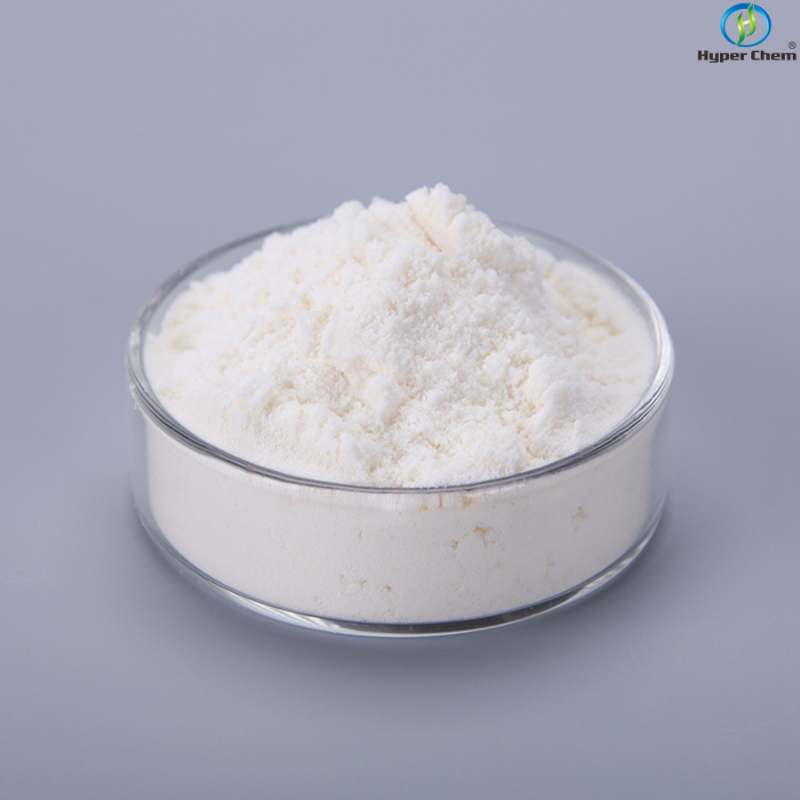-
Categories
-
Pharmaceutical Intermediates
-
Active Pharmaceutical Ingredients
-
Food Additives
- Industrial Coatings
- Agrochemicals
- Dyes and Pigments
- Surfactant
- Flavors and Fragrances
- Chemical Reagents
- Catalyst and Auxiliary
- Natural Products
- Inorganic Chemistry
-
Organic Chemistry
-
Biochemical Engineering
- Analytical Chemistry
-
Cosmetic Ingredient
- Water Treatment Chemical
-
Pharmaceutical Intermediates
Promotion
ECHEMI Mall
Wholesale
Weekly Price
Exhibition
News
-
Trade Service
Myelofibrosis (MF) refers to the pathological state in which bone marrow hematopoietic tissue is replaced by fibrous tissue, which affects hematopoietic function.
It can be divided into primary myelofibrosis (PMF) and secondary myelofibrosis ( SMF)
.
It can be divided into primary myelofibrosis (PMF) and secondary myelofibrosis ( SMF)
PMF is a BCR-ABL1-negative myeloproliferative neoplasm (MPN) caused by the clonal proliferation of abnormal hematopoietic stem cells, leading to progressive myelofibrosis
.
Its main features are bone marrow fibrosis, extramedullary hematopoiesis, anemia, hepatosplenomegaly, progression to leukemia, and shortened survival
PMF patients often have different degrees of anemia.
The blood films can show erythroblasts, myeloid cells, atypical erythrocytes and teardrop-like erythrocytes, and cytogenetic abnormalities can show 20q deletion, 5q deletion, 7q deletion, +8, +9 and 13q missing
etc.
The driver gene mutations of PMF are JAK2, CALR and MPL mutations
SMF refers to the proliferation of bone marrow fibrous tissue and abnormal hematopoietic function on the basis of a clear primary disease.
It is commonly seen in leukemia, lymphoma, multiple myeloma and other hematological malignant diseases
.
It is commonly seen in leukemia, lymphoma, multiple myeloma and other hematological malignancies.
Myelodysplastic syndrome (MDS) with MF is a relatively common SMF and needs to be differentiated from PMF
.
MDS is a group of clonal hematological malignancies originating from bone marrow hematopoietic stem/progenitor cells, characterized by one or more lineage cytopenias and pathological hematopoiesis, usually with recurrent chromosomal abnormalities and a high risk of transformation to leukemia.
case after
case by case by caseA 69-year-old female patient was admitted to our hospital on November 17, 2021 because of "dizziness and fatigue with intermittent high fever for more than 4 months"
.
It was found that the history of anemia was more than 5 months, and EPO was used intermittently to improve the blood picture, but the symptoms were not improved significantly
The patient visited the nephrology department of a tertiary hospital in this city on July 19, 2021.
At that time, the blood routine: WBC 2.
82×109/L, Hb 100g/L, PLT 56×109/L, CRP 74mg/L, PCT 1.
77ng/ mL, was diagnosed with infectious fever, but the symptoms did not improve with antibiotic treatment
.
Bone marrow smear morphology and bone marrow biopsy during nephrology hospital stay
.
The morphology of bone marrow smear showed: 32% neutral lobulated nuclear cells, 2% neutral rod-shaped nuclear cells, 4% basophils, 60% small lymphocytes, and 2% monocytes
Discharge diagnosis mainly includes: 1.
Fever to be investigated; 2.
IgA nephropathy; 3.
Chronic kidney disease; 4.
Leukopenia; 5.
Moderate anemia; 6.
Thrombocytopenia,
etc.
After being transferred to our hospital, bone marrow morphology, flow immunophenotyping, FISH, gene mutation and biopsy were performed
.
Bone marrow smear: 1.
About 5-20 nucleated cells/HP with reduced proliferation, G:E meaningless
.
2.
Cytochemical staining: POX91%(-), 7%(+), 2%(2+), DCE93%(-), 7%(+), PAS about 14% of cells were diffusely positive, ANAE about 56% The cells of ANAE+NaF were diffusely positive, about 6% of the cells of ANAE+NaF were diffusely positive, and the inhibition rate was 89.
3%
.
Peripheral blood films showed 43% primary and young cells (like monocytes)
Flow immunophenotyping: 38.
19% abnormal myeloid immature cells were seen in the sample, which was considered to be acute myeloid leukemia (AML), and its LAIP was CD45dim+CD34+CD117+CD7+CD13part+CD33+CD38+HLA-DR+CD371dim+
.
The main positive expression antigens of flow cytometry are as follows:
FISH test results: 88.
8% of abnormal signal cells with 5q31 deletion, 88% of abnormal signal cells with 5q33 deletion, 93.
6% of abnormal signal cells with TP53 deletion, 9.
2% of abnormal signal cells with 20q deletion, and +8 abnormal signal cells The ratio is 5.
4%
.
5q31, 5q33, TP53, 20q/CEP8 in situ hybridization diagram is as follows:
WT1 quantification: 30.
495%
.
JAK2 missense mutations (VAF: 87.
93%) and TP53 (VAF: 54.
83%) were detected in MPN common mutation genes and AML gene mutation panels, and the reports are as follows:
Bone marrow biopsy showed: bone marrow nucleated cells were extremely active, mainly primitive/naive cells, densely distributed, CD34+CD117+ greater than 20%, consistent with acute myeloid leukemia, the report is as follows:
case analysis
case study case studyAfter the patient was discharged from the hospital on July 30, he went to two other tertiary hospitals in the city, but was not admitted to the hospital for various reasons, and was recommended by one of the hospitals to come to our hospital for diagnosis and treatment
.
I remember that just after the bone puncture sample was delivered to the laboratory, the patient's attending doctor called to emphasize that the cause of the anemia was unknown, and hoped that the laboratory would give a diagnosis opinion as soon as possible so that a corresponding treatment plan could be formulated
.
At the end of the day, Morphology and Flow gave preliminary results - AML
.
The morphological characteristics of primary and immature cells in bone marrow smears are close to those of mononuclear cell lines.
The positive rates of POX and DCE are less than 10%, and most of them are positive 1+.
About 56% of primary and immature cells of ANAE are positive and 89.
3% can be detected by NaF.
Suppressed, morphologically inclined towards monocytic leukemia
.
The immunophenotypic characteristics of flow cytometry are: expression of stem and progenitor cell markers (CD34, CD117, CD38, HLA-DR) and myeloid markers (CD13, CD33, CD371), cross-lineage expression of CD7, and other series of specific antigens are Negative, and phenotypically naive monocytes are rare
.
Pathology only showed positive CD34 and CD117 antigens, consistent with AML
.
Therefore, the patient was finally diagnosed as AML non-M3, and started on November 21st with vetoclax + azacitidine chemotherapy
.
experience
experience, experience, experienceThe patient was quickly diagnosed and started treatment in our hospital, but it was puzzling that it was only 4 months since the previous nephrology hospitalization.
At that time, there were symptoms of three-line reduction and anemia, and bone marrow smear was performed to rule out blood system diseases.
Film and biopsy examination showed that the proportion of myeloid was decreased, the proportion of lymphoid was increased, myeloproliferative tumor (myelofibrosis) was waiting to be discharged, and there was no basis for the diagnosis of leukemia
.
When he was transferred to our hospital, the number of white blood cells increased by 5 times, hemoglobin decreased by half, and the platelets decreased further.
He developed AML in a short period of time.
Is his AML primary or secondary?
In literature reports, the positive rate of JAK2V617F mutation in primary AML is very low.
German and Korean scholars reported 1.
1% and 2.
7%, respectively.
Wang Shengmei et al.
found 2 cases (1.
65%) in 121 cases of AML.
Four cases of JAK2V617F mutation were detected, of which three cases of AML were secondary to MPN
.
It is not uncommon for JAK2V617F-positive MPNs to progress to AML.
The currently recognized second-hit model supports that the pathogenesis of AML is multi-step.
JAK2V617F is a class I mutation, and if the class I mutation does not affect the differentiation of hematopoietic cells, it is not enough to cause AML
.
Studies have shown that if there are mutations other than JAK2V617F, such as ASXL1, TP53, SRSF2, IDH1/2, and RUNX1, the possibility of transformation to AML is significantly increased at the time of initial diagnosis
.
In this case, both TP53 mutations and deletions were detected, and there was previous evidence of MF, so primary JAK2V617F-positive AML is unlikely
.
A review of the medical history revealed that the patient had received cyclophosphamide + prednisone for 6 months in 2018, and the WHO2016 chapter on "Treatment-associated myeloid neoplasms (t-MNs)" indicated that alkylating agents, topoisomerase II inhibitors and Ionizing radiation is the main cause of t-MNs, but usually occurs 5-10 years after exposure
.
Most of these t-MNs show features of MDS with bone marrow failure, including one- or multi-lineage cytopenias, abnormal or complex karyotypes involving Nos.
5 and 7, and are usually associated with TP53 mutations
.
Although this case found evidence of MF only 3 years after the use of alkylating agents, t-MNs cannot be completely ruled out
.
In addition, the patient's JAK2V617F mutation VAF value is very high (87.
93%), is it possible that it is PMF?
Careful analysis of the test results during hospitalization in our hospital: FISH showed 5q deletion, 20q deletion, trisomy 8 and TP53 deletion.
Although cytogenetic abnormalities should be subject to karyotype analysis, FISH at least indicated the presence of No.
5, No.
20, and TP53.
There is a partial deletion of gene segments on chromosome 8.
Abnormalities involving these three loci are most common in MDS, but are also seen in some PMFs
.
JAK2V617F mutation and TP53 mutation were detected by NGS.
JAK2V617F is the driver gene mutation of PMF and is one of the main diagnostic criteria for PMF.
However, JAK2V617F mutation is not only found in PMF, but also reported in MDS, MDS/MPN and AML
.
TP53 mutation is the most common molecular abnormality in malignant tumors, which can be found in various solid tumors and hematological malignancies
.
The main feature of PMF is hepatosplenomegaly, laboratory abnormalities are usually anemia, with moderate to severe anemia, mature erythrocytes of variable size, atypical erythrocytes and teardrop-shaped erythrocytes, nucleated erythrocytes and pleochromatic erythrocytes, platelets and The results of white blood cell counts vary greatly and can be increased or decreased.
The appearance of young red and myeloid cells in blood films is one of the characteristics of PMF
.
The characteristic manifestations of MF secondary to MDS are pancytopenia, mild or no spleen, obvious bone marrow fibrosis, no diffuse intramedullary blast proliferation, abnormal hematopoiesis in the bone marrow, and poor prognosis
.
Both PMF and MDS are at high risk of transformation to leukemia
.
During the hospitalization in July, the patient had no signs of liver and spleen enlargement, and had trilineage reduction, bone marrow smear dilution or coagulation, and bone marrow biopsy showed active proliferation, no abnormal red blood cells and pathological hematopoiesis.
Pathological changes, but pathological changes in the myeloid lineage also occur in leukemia
.
The patient's cytogenetic results were absent, and FISH could only provide a reference.
Myeloid mutations detected JAK2 and TP53 mutations, but no MDS-related high-frequency gene mutations
.
We have traced the patient's previous hospitalization as far as possible with relevant tests and imaging results, but due to the lack of corroboration of other laboratory results, it is difficult to distinguish whether it is primary JAK2V617F-positive AML or t-MDS secondary to MF or PMF progression to AML
.
Epilogue
conclusion conclusionWhen MDS or MPN diseases are highly suspected clinically, the bone marrow morphology fails to provide valuable clues and the diagnosis of pathological biopsy is not clear, flow immunophenotyping, karyotype analysis and gene mutation detection should be added in time
.
Flow cytometry is highly sensitive for abnormal problasts and can detect small clonal abnormal populations.
The results of cytogenetics can not only assist in diagnosis, but also stratify patients for risk and prognosis.
Certain genetic mutations with diagnostic value can be used.
Provide a basis for diagnosis
.
The importance of taking MICM-P results into account for the diagnosis of hematological malignancies must be emphasized, because a clear diagnosis and timely selection of reasonable and effective treatment plans are conducive to restoring the hematopoietic function of the bone marrow to the greatest extent, avoiding hematopoietic failure caused by excessive chemotherapy, and satisfying the needs of patients.
The patient's basic survival needs and may affect disease outcome
.







